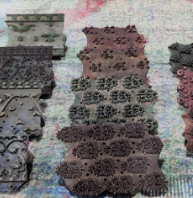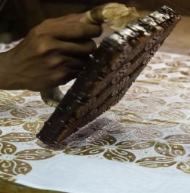Sanganeri Hand Block Printing
Hand Block Printing



History
Sanganer printing originated in Sanganer, near Jaipur, the capital of Rajasthan, towards the end of the 17th century, when printers from the neighbouring state of Gujarat migrated and settled in Rajasthan. These artisans formed a large, supportive community, with block printing at the core of their culture. Sanganer is still an important block printing centre known for its skilled printing technique and fast colours. A variety of designs used in perfect harmony give these prints their unique character.
Raw Materials and Tools
Raw Materials:
- Fabric
- Water
- Bleach
- Natural and synthetic dyes
- Printing paste
Tools:
- Wooden printing blocks
- Printing tables
- Steaming equipment
- Washing and drying setup
- Ironing equipment
Process
Sanganer prints are made on light fabrics. First, the cloth is scoured in bleach for 24–48 hours, then washed and dried. Artisans use wooden blocks to hand-print outlines and fill colors. The fabric is sun-dried, steamed, washed, dried again, and ironed to fix the colors.
Design and Color
Sanganer is renowned for its small, decorative, and delicate floral patterns. It displays an array of butis and butas, which are printed on fine cotton and silk with a bright white background. The primary symbols used in the designs include flowers, paisley, centerline patterns, leaves, and birds. Most inspiration for the Sanganeri printing style comes from commonly observed symbols in nature, and hence, most designs are named after flowers, vegetables, and other such objects.
Product Range
In the olden days, the fabric was printed mainly for use by royal families, nobility, and courtiers, but at present, it is famous for dyeing and printing colourful dresses, bed sheets, curtains, dress material, and a variety of other textiles for everyday clients and is also exported.